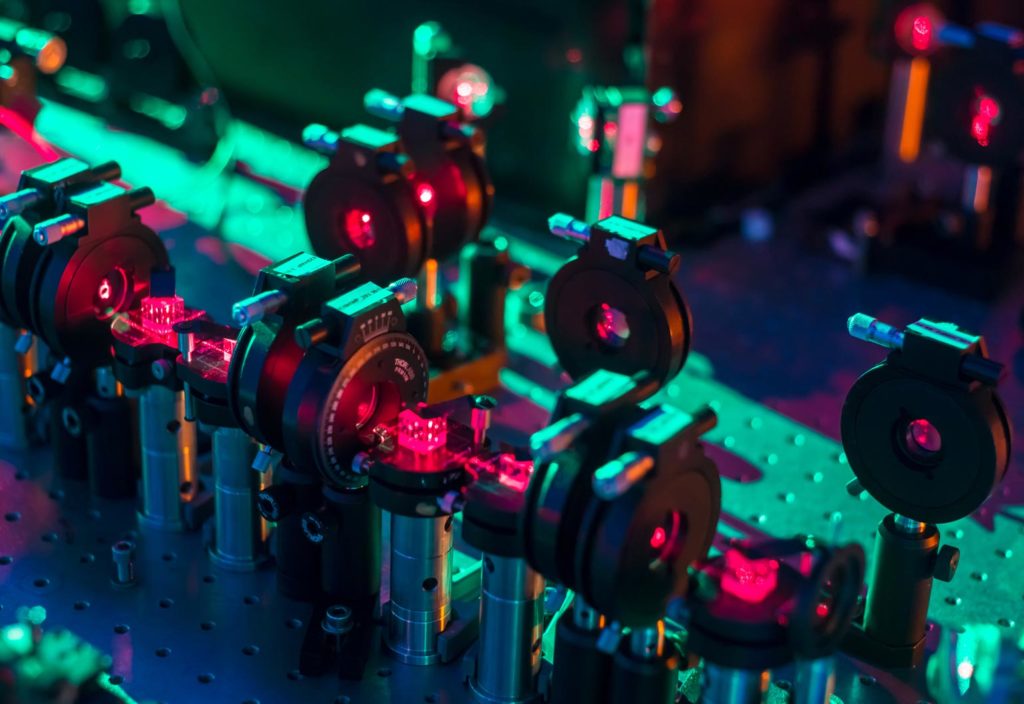Researchers have built a quantum device that brings us a step closer to reducing the memory needed to model complex weather and traffic systems. How? By containing all possible futures at once.
The device was developed by Griffith University researchers in collaboration with Assistant Professor Mile Gu from Singapore’s Nanyang Technological University (NTU), who pioneered the development of the prototype’s quantum simulation algorithm.
According to Farzad Ghafari, a PhD student at Griffith University, the prototype uses quantum superposition, most famously described in terms of Schrödinger’s cat.
“Using this feature, the quantum simulator contains all of the future possibilities of a specific process at the same time,” Ghafari told create.
Ghafari explained that the ability to predict the future using superposition could lead to more efficient quantum simulations of real-world problems including traffic congestion and weather prediction.
This prototype is the first to demonstrate that quantum simulation has a memory advantage over conventional silicon-based computing in simulating processes with a number of possible outcomes over several steps, he added. 
Heads or tails?
To compare the memory consumption of their device to traditional computers, the researchers focused on a set of simple processes with eight possible futures, each with a different probability of occurring. This was a series of three coin tosses where the coin started in one of two initial states: heads or tails.
Griffith University researcher Dr Nora Tischler explained that the processes simulated were a bit different to normal coin tosses, where there is an equal probability of heads or tails on each flip.
“A way of thinking of it is as a coin in a box. You shake your box and there’s a probability of it flipping and another probability of it not flipping,” Tischler said.
The researchers were able to tune this ‘perturbed’ coin to control the probability of the coin remaining in heads or tails during the experiment.
The device was built using a photonic quantum information processor, and potential future outcomes of the process were represented by the location of photons, which are quantum particles of light.
The device used a single qubit of memory, with several ‘helpers’ or ancillas, which did not incorporate memory. It had the ability to encode up to four qubits on a single photon in order to allow the researchers to measure the outcome of the experiment.
The researchers found that the quantum simulator produced outputs that were close to the expected probability distribution for the perturbed coin. Ghafari confirmed to create that for all the processes tested, the quantum simulator needed less than – or at most the same amount of – memory as a classical computer.
The research paper, published in Nature Communications in April, said it was important to prove that the memory advantage was maintained over several time steps, which has been a challenge in past experiments. To do this, Ghafari said that Griffith University’s expertise in generating and controlling very high-quality single-photon quantum states was essential.
Overlapping futures
The researchers took the experiment a step further and added a second photon to determine the overlap in the future of two processes, without measuring the futures individually.
“Those two photons are living in two different simulators, and we interfere with them to see how the future from two processes overlaps,” Ghafari explained.
To do this, the researchers used semi-transparent mirrors, with two inputs and two outputs.
“You send in one photon at each input and then check at the output whether they are exiting at the same arm or two different arms,” Tischler said.
Ghafari added that the ability to measure the overlap in futures of two simulated processes was related to applications such as machine learning.
This research is another step along the road to finding a ‘killer app’ for quantum computing. Professor Geoff Pryde, who heads up the experimental quantum computing group at Griffith University, compared the current state of play in his field to the early days of classical computers.
“Just as few could imagine the many uses of classical computers in the 1960s, we are still very much in the dark about what quantum computers can do. Each discovery of a new application provides further impetus for their technological development,” Pryde said.
